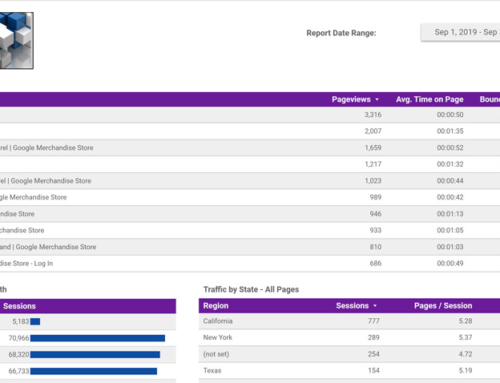
The day has arrived. After investing money, your time, energy and talent and that of your team on developing your business’ new website, launch day is here! If you’re like most people, you’re comfortable with consuming information from the Internet, but putting a new website out there is not in your wheelhouse. Fear not. Here are some quick tips to help have a successful retail website launch.

Focus on the details. Second, make sure your team runs through every page of the site and clicks every link to make sure they are working properly and going to the correct location. Remember: when you take a site live from a web development stage, you may have to update the URLs. There is nothing more tragic than launching a brand-new website, only to find out all your links produce page errors. It is worth the extra time to make sure the links are in place, so that you can focus on promoting the new site with confidence and so that people will find it helpful and functioning properly. You will also want to be sure that Google Analytics has been set up and that those reports are emailed directly to your company from Google for your review. In contrast, some marketing agencies have Google email them the web analytics report and then the marketers rebrand the report and send it to clients. This opens clients to the vulnerability of the marketer editing the analytics being reported. Instead, receive the report directly from the source.
 Third, once the site is up and running, you’re going to get a million hits in the first 20 seconds and your business will double overnight. Well, not quite. But, during the development of the site, your marketing team should plan which steps need to be in place to promote the new site. How and when will you announce the new website design on social media vs. traditional media? How are you going to announce the site to your existing customers and which benefits will they see? Have you established a way to easily get feedback from your customers? Is the site launch connected to a new retail store? See our 10 Marketing Tips for Opening a Retail Store. The website should be a part of a coordinated effort that rebrands your social media, printed collateral and any advertising that you are running. This retail marketing ensures your customers see there are positive changes happening in your business.
Third, once the site is up and running, you’re going to get a million hits in the first 20 seconds and your business will double overnight. Well, not quite. But, during the development of the site, your marketing team should plan which steps need to be in place to promote the new site. How and when will you announce the new website design on social media vs. traditional media? How are you going to announce the site to your existing customers and which benefits will they see? Have you established a way to easily get feedback from your customers? Is the site launch connected to a new retail store? See our 10 Marketing Tips for Opening a Retail Store. The website should be a part of a coordinated effort that rebrands your social media, printed collateral and any advertising that you are running. This retail marketing ensures your customers see there are positive changes happening in your business.
Fourth, a website is a fluid, ever-changing thing. After it launches, the website should evolve from that day forward, responding to the needs and wants of your customers. So, as important as it is to be completely satisfied with the look and feel of your site on day one, marketing for retail means thinking about what it will look like on day 30, 180, 365 and beyond. If it looks the same with no changes happening month after month, you’re missing an opportunity to engage with customers. Which updates should you plan for? First, the product selection featured on your homepage needs to be updated with new products and seasonal offerings. Add unboxing and demonstration videos. Let customers know what to expect when they purchase your product in the store for the first time and on return visits, especially if you have a customer loyalty program. Finally, your team should continually review analytics from your website so that you can identify and react to customer behavior on the site.
This brings me to the fifth consideration. Who on staff will oversee updating the site? And, do you both have all the needed login information for your DNS, hosting and editors for the new site? As we’ve been saying since 2011, who has the keys to the website? Working with Tell Your Tale, you will be able to update your site with little or no involvement from us. Now certainly, there are some things that may require professional assistance for custom website design, but simple updates shouldn’t cause anyone heartburn. If you choose to have someone in your organization make web updates on a regular basis, then choose a long-term employee at the company. That way, you can avoid costs associated with retraining employees on how to make the web changes your business needs. Also find out from the developer what they would charge and which service level they would be able to provide for more complex updates.
Now the site is out there so it’s time to gather information and measure results against your goals. After the site has been published for the first 30 days, you should plan to review your Google Analytics. Data from your old website will provide you a solid baseline to compare against. However, take into consideration that your optimization in the new site will need some adjustments. If you’re using WordPress, download our Five WordPress Optimization Tips to get started.
If this website is a completely new venture, you’ll want to be sure the site has been indexed by Google and that analytics data is being reported properly. Work off your monthly reports to refine the user experience. Look hard at the traffic sources to your site. Are your social media efforts directing people back to the site? How are any forms on the site performing? As stated earlier, you will need to be ready to make changes based on the feedback you get from current customers and the behavior you can observe through Google Analytics.
If you have any other questions about what to expect when you’re expecting… a website, please feel free to contact us.







